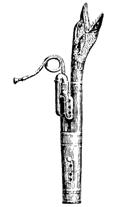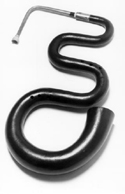
Berlioz Historical Brass dedicates itself to the exploration and presentation of early 19th century brass instruments. The inspiration for the ensemble stems from a Boston Symphony Orchestra performance of Hector Berlioz's Messe solennelle. Maestro Seiji Ozawa set a precedent by including a period instrument in the orchestra--the serpent played by Douglas Yeo--thus demonstrating that the modern symphony and chamber music settings could provide a venue to inform audiences of these unique brass instruments. The ensemble now includes the presentation of twelve instruments--keyed bugle, natural horn, trombone, buccin, serpent, serpent Forveille, serpent a pavillon, Russian bassoon, cimbasso, bass horn, ophimonocleide, and ophicleide--all used during Berlioz's time and most appear in his Grande traite d'instrumentation .Berlioz Historical Brass players, in what has become an informal collective of musicians, perform in modern and period orchestras and serve as editors, columnists, and authors of historical brass resarch. The ensemble also serves to encourage and assist in the production of recordings and the publication of early 19th century editions of sacred and harmonie music for historical brass.
The Berlioz Historical Brass collective is conceived as an educational organization, encouraging further understanding of early 19th brass instruments in sacred, orchestral, and chamber music settings. The ensemble engages in web-activities to introduce brass instruments to the interested public, actively initiates research in fruitful yet unexplored musical domains, and offers performances with choral ensembles, orchestras, and symphonic bands and chamber music recitals of brass repertoire of the 18th-20th centuries.
For more information, contact
Craig Kridel
Berlioz Historical Brass
craigkridel@gmail.com
photo credits: buccin, horn, keyed bugle © Edinburgh University, Collection of Historic Musical Instruments;all other photos: Berlioz Historical Brass or
© with photographer's credit

basson russe
Berlioz Historical Brass serves as the educational component of US (United Serpents), a 501(C)3 non-profit corporation organized exclusively for charitable and educational activities.

serpent
exploring the role of early 19th century brass